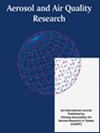棕碳气溶胶的浓度、辐射强迫及其对气候的影响研究进展
IF 2.5
4区 环境科学与生态学
Q3 ENVIRONMENTAL SCIENCES
引用次数: 0
摘要
本文章由计算机程序翻译,如有差异,请以英文原文为准。
Advances in the Research on Brown Carbon Aerosols: Its Concentrations, Radiative Forcing, and Effects on Climate
Brown carbon (BrC) are important light-absorbing carbonaceous aerosols in the atmosphere, and it is of great significance to study the climate effects of BrC for regional or global climate change. This paper reviews recent advances in research on the radiative forcing of BrC, its effects on temperature and precipitation, and snow/ice albedo. Recent research suggests that: (1) Climate effects of aerosols can be represented more accurately when including BrC absorption in climate models; the regions with the highest global mean surface BrC concentrations estimated by models are mostly Southeast Asia and South America (biomass burning), East Asia and northeast India (biofuel burning), and Europe and North America (secondary sources); estimates of BrC radiative forcing are quite erratic, with a range of around 0.03–0.57 W m –2 . (2) BrC heating lead to tropical expansion and a reduction in deep convective mass fluxes in the upper troposphere; cloud fraction and cloud type have a substantial impact on the heating rate estimates of BrC. The inclusion of BrC in the model results in a clear shift in the cloud fraction, liquid water path, precipitation, and surface flux. BrC heating decreases precipitation on a global scale, particularly in tropical regions with high convective and precipitation intensity, but different in some regions. (3) Uncertain optical properties of BrC, mixing ratio of radiation-absorbing aerosols in snow, snow grain size and snow coverage lead to higher uncertainties and lower confidence in the simulated distribution and radiative forcing of BrC in snow than BC. To reduce the uncertainty of its climate effects, future research should focus on improving model research, creating reliable BrC emission inventories, and taking into account the photobleaching and lense effects of BrC.
求助全文
通过发布文献求助,成功后即可免费获取论文全文。
去求助
来源期刊

Aerosol and Air Quality Research
ENVIRONMENTAL SCIENCES-
CiteScore
8.30
自引率
10.00%
发文量
163
审稿时长
3 months
期刊介绍:
The international journal of Aerosol and Air Quality Research (AAQR) covers all aspects of aerosol science and technology, atmospheric science and air quality related issues. It encompasses a multi-disciplinary field, including:
- Aerosol, air quality, atmospheric chemistry and global change;
- Air toxics (hazardous air pollutants (HAPs), persistent organic pollutants (POPs)) - Sources, control, transport and fate, human exposure;
- Nanoparticle and nanotechnology;
- Sources, combustion, thermal decomposition, emission, properties, behavior, formation, transport, deposition, measurement and analysis;
- Effects on the environments;
- Air quality and human health;
- Bioaerosols;
- Indoor air quality;
- Energy and air pollution;
- Pollution control technologies;
- Invention and improvement of sampling instruments and technologies;
- Optical/radiative properties and remote sensing;
- Carbon dioxide emission, capture, storage and utilization; novel methods for the reduction of carbon dioxide emission;
- Other topics related to aerosol and air quality.
 求助内容:
求助内容: 应助结果提醒方式:
应助结果提醒方式:


